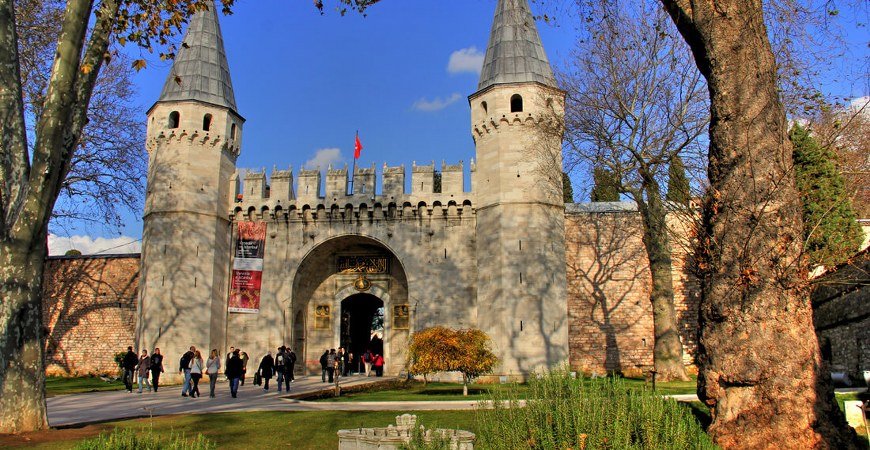
The Middle Gate of Topkapi Palace Museum
The Middle Gate of Topkapi Palace Museum,
This gate, known as Bab’i – Selam, or Gate of Salutation, acquired its twin turrets during the reign of Suleyman the Magnificent. Above the two doors of gilt wrought iron is inscribed the date 1524. Research has brought to light the fact that this gate was completely different in the period of the Conqueror. It was customary for the viziers to alight from their horses outside the gate; only the sultan could go through on horseback. Statesmen have been known to be imprisoned in the little gloomy cells inside the two towers. Beyond the gate is a roofed and broad-leaved exedra, built in the eighteenth century. This leads into the second court, the House of Salutation. The first path to the left led to the imperial stables, the second to the Harem, and the third to the Kubbealti, under the Dome, the building where meetings of the Divan took place. Walking along this path the viziers received salutations at fixed intervals. The fourth path was reserved for the use of palace officials, and the fifth, broader than the rest, for the sultan himself. The paths to the right led to the imperial kitchens. Most of the cypresses in this courtyard were planted in the time of Sultan Reshat Mehmet V and the courtyard itself was greatly modified at the same time. On the right-hand side of the second courtyard is a portico with three doors opening from it.’ These doors lead to what remains of the cooks’ living quarters’ and gardens. The I Hams originally consisted of a building with four domes constructed in the Conqueror’s time. Six more domes were added by Suleyman the Magnificent, and after the kitchens were damaged by fire in 1574 the architect Sinan added ten conical domes and redecorated the kitchens. At one time the cooks and their assistants numbered 1117, and the huge kitchens were a factory for the making of jams, sweets, pickles and oven perfumed soap. With time the hearts were extinguished, the chimneys stopped smoking and these buildings fell into ruin. They were repaired in 1938 -39 and it then became possible to exhibit here to the public precious Chinese and Japanese porcelains, European crystal and dinner services, the palace silver and copper dishes and countless other precious objects of a similar nature.